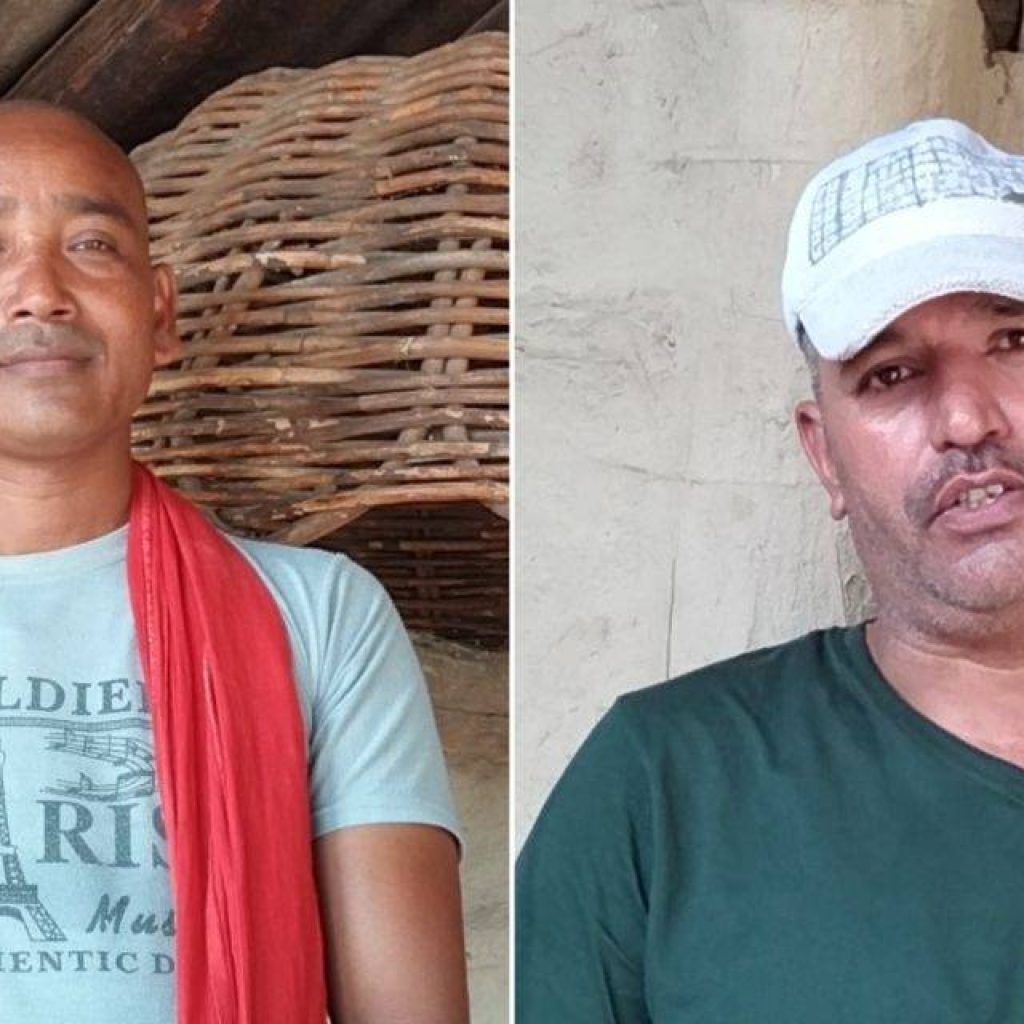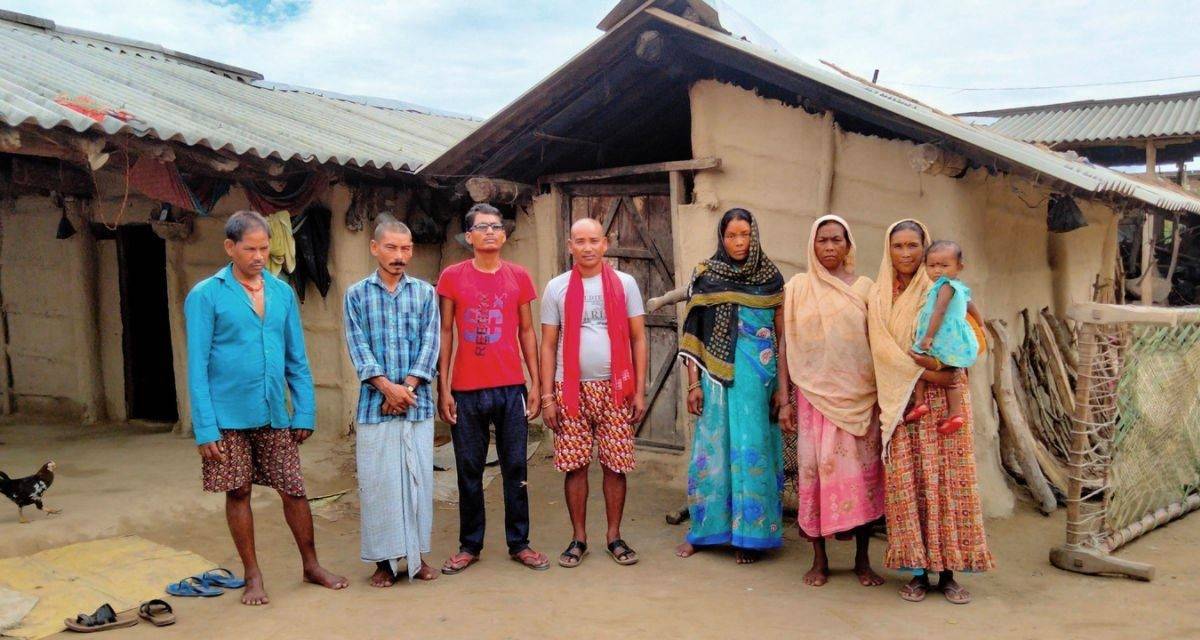That inspired solution — the local bank run by Tharu tribals in the village of Bishunapur in Bahraich has been an inspiration in how to free the community from the exploitation of moneylenders…reports Azeem Mirza
In the foothills of the Himalayas, surrounded by the dense Katarniya Ghat forest, lies the small village of Bishunapur, 47 km from Mihinpurwa village block in Uttar Pradesh’s Bahraich district. Home to 2,500 people, of whom 2,200 belong to the scheduled tribe Tharu, the villagers here have had a troubled history with moneylenders.
The residents couldn’t even get half the price on the crops they toiled for as the Mahajans (moneylenders) would take the harvested crop at deeply discounted rates in lieu of loan repayment. If the borrower didn’t have food grains, moneylenders recovered the loan at the rate of 10 per cent per month. However, the situation has changed for the better through an impactful initiative undertaken by the villagers.
Eleven years ago, the youth of Bishunapur formed a bank, named Adarsh Swayam Sahayata Samuh (Ideal Self Help Group). Any resident of the village can borrow money from this bank at an interest rate of only 1 per cent. The people decide and inform the bank when they can repay the loan. Further, if someone is able to repay the money within 15 days, no interest is charged. This has helped the villagers emerged from the web of moneylenders.
That inspired solution — the local bank run by Tharu tribals in the village of Bishunapur in Bahraich has been an inspiration in how to free the community from the exploitation of moneylenders.
Basant Lal, the Pradhan of Bishunapur and the president of the Adarsh Swayam Sahayata Samuh, said, “Ten years ago, our village was in a bad condition. The money lenders would come here as soon as the crop was ready – be it paddy, wheat, maise, lentils – throw down the sack and say, ‘I want the sack to be filled’, without so much as considering if there was enough harvest. So our family elders had to give away the required grain to the moneylenders, even it meant borrowing from others in the village. It was hard to recover from such debts.”
The people of the village brainstormed for many days until the idea for a community-led bank emerged. It was unanimously decided that members would deposit Rs 100 per month to create the fund, and it would be used to give loans to those in need at an interest rate of just 1%.
“One by one, people kept joining, and now the group is 47-members strong. At present, the bank has a sum of Rs 12,16,081, inclusive of deposits by members, interest and fines. A meeting is held every month and it is mandatory for member-shareholders to attend. Absence or failure to pay the monthly deposit in time incurs fines, Lal told said.
Three people in the village manage the Adarsh Swayam Sahayata Samuh: one person motivates villagers to deposit the money, the second person is in charge of collecting the money, whereas the third person maintains the fund and the accounts. In addition, the three members are responsible for updating all the other shareholders of the bank regarding the transactions in the monthly meeting.
“Earlier, when we used to go to borrow money from moneylenders, they used to sit high up as we sat on the ground, waiting for hours. But now, the moneylenders themselves come to the village to ask if anyone needs money. They say, ‘generation after generation has been taking loans from us, why not you?’ We tell them, ‘those days are no more.’ Now, if anyone needs money to sow, buy fertilisers or medicines, they can take money from our bank – the need for the moneylender is over. It is better not to be dependent on anyone to solve our problems. We want such a group to be formed in every village,” said Lal.
The changing legacy of the Tharus
There are seven Tharu villages in the Mihinpurwa Tehsil, having a collective population of about 10,157, said Jang Hindustani, who runs the NGO Sevarth Foundation and has been working in the region for over a decade. “The situation of all these Tharu villages was almost the same as Bishunapur. After establishing the ‘Adarsh Swayam Sahayata Samuh’, other Tharu villages have also followed suit. However, the Bishunapur organisation being the oldest has more funds and has been able to help more people,” he added.
The Tharu tribals have a reputation for being loyal and straightforward. Once Tharus establish a relationship of trust with a person, even if they are simply a shop owner, they will continue to conduct business with them, and only them, unless they are deceived. The Mahajans, who had historically held the households’ trust with ready funds, had taken advantage of this trait for years, said Hindustani. “But now the younger generation has become very smart and aware,” he said.

The Tharus have a colourful history, according to Dr Neelam Agrawal who has been studying the Tharus of Bahraich, Balrampur and Lakhimpur and currently teaches at National PG College, Lucknow. The ‘Rana’ Tharus are considered to be the descendants of Maharana Pratap’s queens. It is believed that when Maharana Pratap was attacked, his queens fled into the forests with their servants and soon their community was established. “This is why the status of women is relatively high amongst Tharus,” Dr Agarwal said. The Dagoria and Kathotia Tharus also consider themselves the descendants of the kings of Nepal.
The tribe, whose bloodline once coursed through royal kingdoms and palaces, had to plead at the doors of the moneylenders. This used to hurt the community’s sentiments and they were ashamed of their poverty. But not anymore, said Munni Lal, a native of Bishunpur village.
ALSO READ-NPCI’s global arm partners Mashreq Bank for UPI payments

